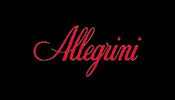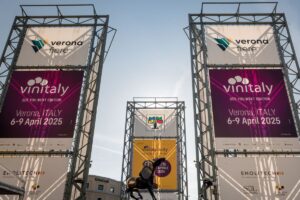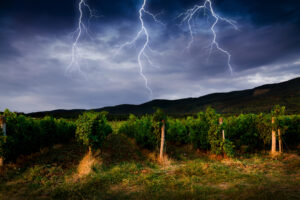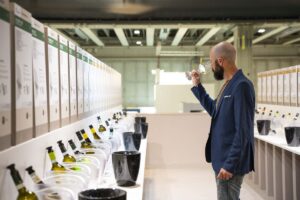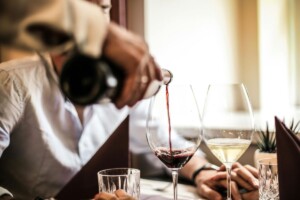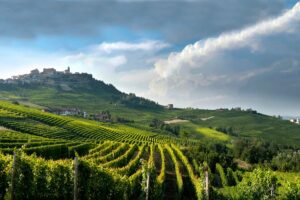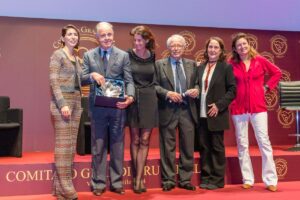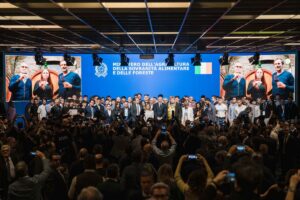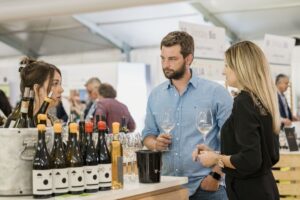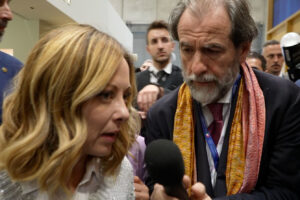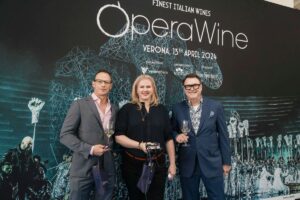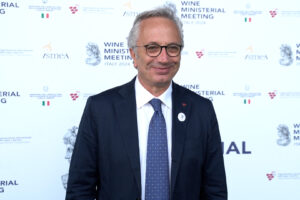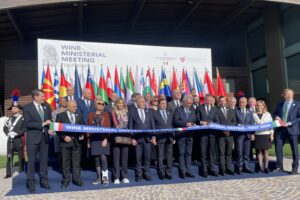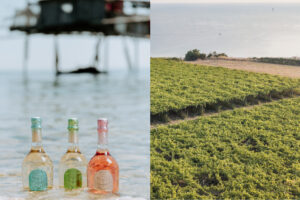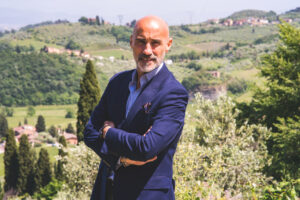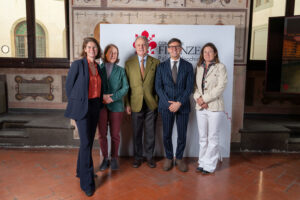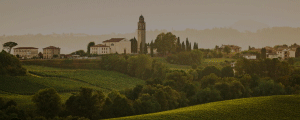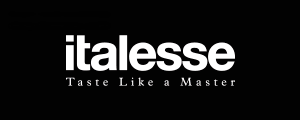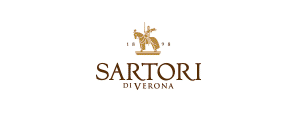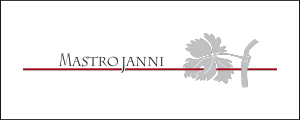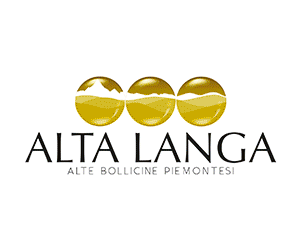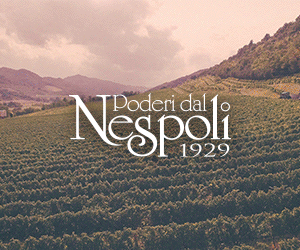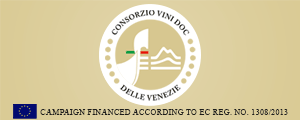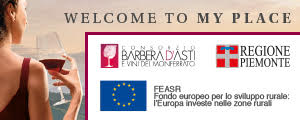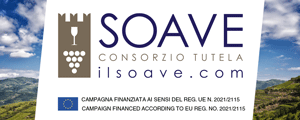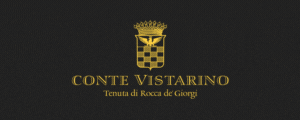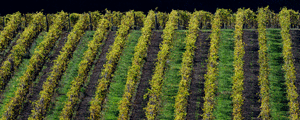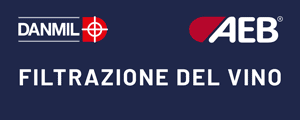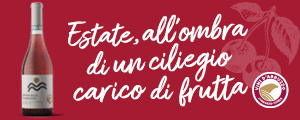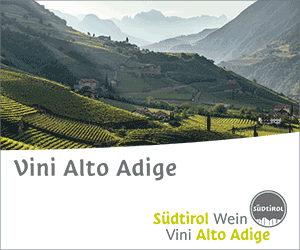The sun has been shining in Italy, almost uninterrupted, for at least the past four months, for the joy of vacationers and tourists, but to the deep concern of the agricultural world. Its top product, wine, is facing one of what will in all likelihood prove to be the hottest summer ever. Following a very hot June, it looks like next we’re in for an even more hellish heat.
This summer recalls that of 2007, and the really scary thing is not so much the heat, Professor Luigi Moio, ordinary Professor of Enology at the University of Naples Federico II and President of the OIV Commission, told WineNews, as “the lack of water. In some areas it has not rained for more than four months”. So one automatically thinks of a water stress situation that could realistically hit different areas in Italy.
“But it is important to make a distinction between white grapes, which can suffer greater damage, in terms of over ripening, loss of freshness and less acidity, and red grapes. Another crucial distinction is between early and late vines.
The first category”, Moio points out, “includes virtually all of the most popular French varieties, Cabernet Sauvignon, Merlot, Syrah, Grenache, Chardonnay and Sauvignon, which will suffer being early which to some extent makes it impossible to develop completely. The second, instead, includes almost all the Italian native varieties and the red grapes are likely to benefit, at least in some cases, due to these conditions, easily achieving complete maturation, tannins not as green and a better color”.
The situation we are facing is that we might be in danger of “harvesting Chardonnay at the end of July”, warned Moio, “because of climatic evolution that poses an important historical problem, which we have not taken into account in recent years, and precisely when we stopped asking: what is the best combination between soil, climate and variety? The only way we can defend ourselves is to identify the right varieties, which has always been the basic principle of quality viticulture”.
In long-term dynamics, it could be beneficial for “native vines, Sangiovese, Montepulciano, Grillo, Nerello Mascalese, Greco, Aglianico and so on, which already exists because it is certainly not by chance that a particular vine grows in a particular area. The problem is not only the heat but also cultivating varieties in places that are not their origins and therefore are not particularly suitable to their characteristics”.
Climate change is not just about the average temperature rising, for which we do have the tools to defend ourselves. “I'm more worried”, said Luigi Moio, “about the tropical phenomena that, in recent times, have invaded Italy, more and more frequently. It is the extreme weather like hailstorms, downpours, rainstorms, that create serious problems which can destroy vineyards and endanger crops and against which we are absolutely helpless. Not to mention one of the most worrying weather phenomena: frost. Heat is expected, can be dealt with and resolved, though not necessarily through solutions such as irrigation, which among other things depoliticizes the "terroir effect", or what I like to call "liquid ground"; i.e., the exaltation of the relationship with the soil from which wine is the expression, but identifying the varieties best suited to each situation.
However”, Moio said, “we find solutions for drought, for instance, with rootstocks, thanks to the extraordinary work great researchers have done in past decades and explained in viticulture books”.
To understand it better, “let’s take a vine that is especially dear to me”, Moio continued, “like Aglianico. A light water stress is useful, as it leads to early ripening and anticipating harvest times to the first half of October, with riper, healthier, more intact grapes with better tannins.
Now let’s take Chardonnay, or Merlot, which from a winemaking point of view, in certain particularly hot areas are forced. Good wines can be made more or less anywhere, but the great wines are made only when there is a perfect harmony between plant, soil and climate. This is the point in which the winemaker takes on a different role, becoming the assistant to a process that will continue all by itself.
The historic problem is that everyone has decided to target, including and above all, market logistics, the best-known and drinkable varieties, the wines that are easy to describe, Cabernet, with its hints of sweet peppers, Syrah with its notes of pepper, while our native varieties are a huge patrimony and not so easy to define.
They have a completely different complexity, especially Sangiovese, Nebbiolo, Montepulciano, Aglianico, Nerello Mascalese and many others that practically cannot be produced when they are far away from their habitat”.
So, winemaking takes the central role, implied as a set of techniques “that must be aimed at the wine I want to make. The division of roles between those who grow grapes and those who make wine is no longer sustainable, as the dispute is not helpful. One needs to have a solid foundation of agrarian science to address and try to solve the issues described so far, to be able to put it at the service of oenological ones.
After all”, concluded Moio, “man has always played a key role in wine production and in Italy more than anywhere else in the world, with its various farming systems, scaffolding, pergola, arbor. We cannot of course do everything the same way everywhere, but we do have to try to promote our uniqueness and our many varieties and techniques. We are potentially superior even to France, where viticulture only belongs to certain regions, and I'm sure covers a maximum of 10 different varieties”.
Copyright © 2000/2024
Contatti: info@winenews.it
Seguici anche su Twitter: @WineNewsIt
Seguici anche su Facebook: @winenewsit
Questo articolo è tratto dall'archivio di WineNews - Tutti i diritti riservati - Copyright © 2000/2024



